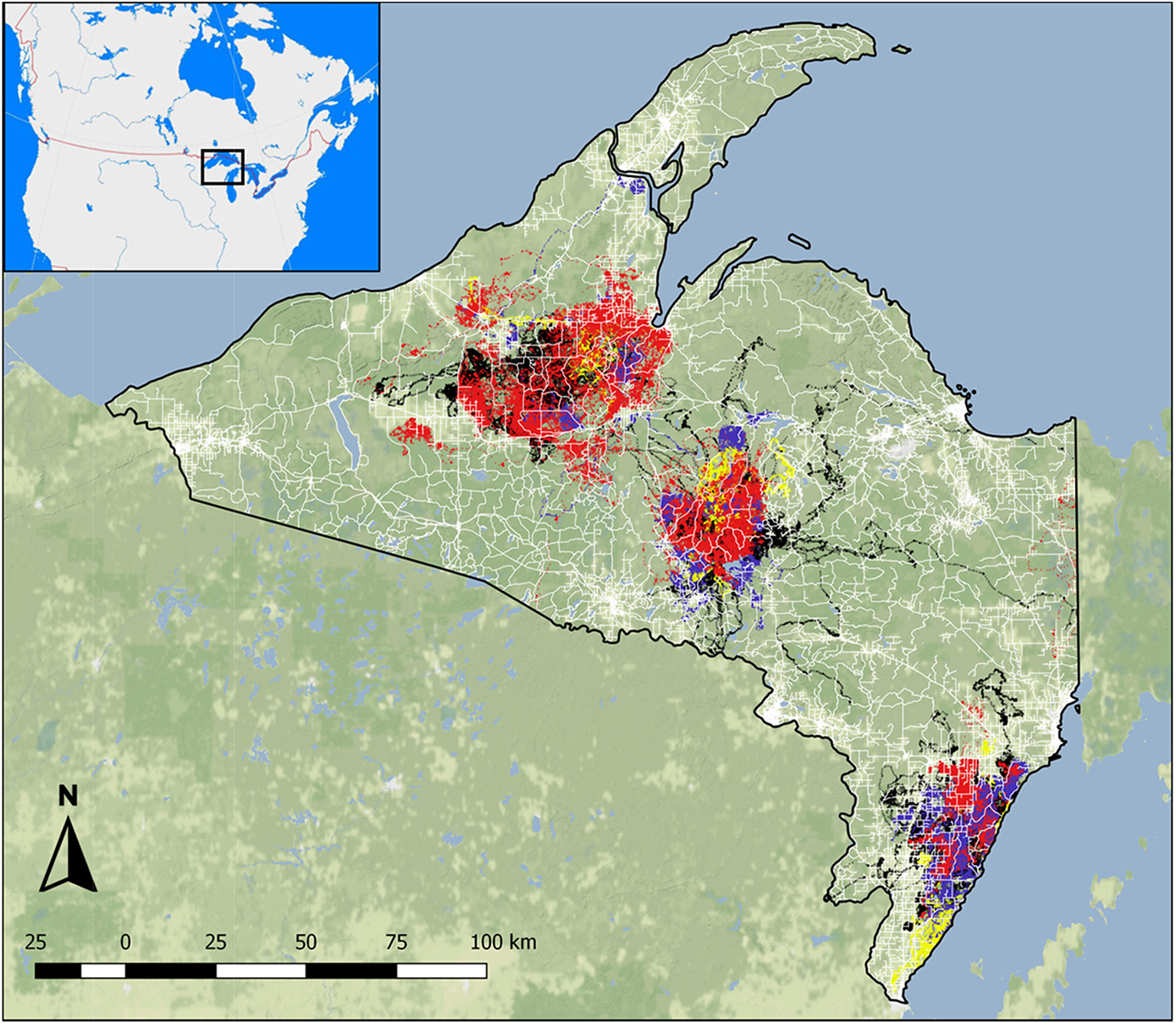Carnivores avoid rush hour by taking to roads at night
Nov 17, 2021
- Large carnivores avoid people by steering clear of roads during the day, but they often travel by road at night.
- Avoiding humans is a higher priority than avoiding other carnivore species.
- Humans may also be altering predator-prey relationships by making large carnivores more nocturnal.
Bears, wolves, and other carnivores in Michigan adjust their behavior to avoid active roadways, researchers reported recently in the journal Global Ecology and Conservation. The study is part of the growing field of road ecology, which explores how wildlife responds to human thoroughfares—and what this means for coexisting with carnivores in an increasingly crowded world.

Some carnivores can thrive in areas with frequent human disturbances and traffic. However, “what kind of carnivore that is within the ecosystem might be different than what you would get in an undisturbed environment,” said lead author Todd Kautz, now a postdoctoral researcher at the State University of New York College of Environmental Science and Forestry (SUNY-ESF) in Syracuse.
To track the summertime movements of iconic carnivores, the researchers captured and placed GPS collars on 64 black bears (Ursus americanus), 13 bobcats (Lynx rufus), 39 coyotes (Canis latrans), and 39 gray wolves (Canis lupus). The collars recorded precise locations every 15 minutes as animals navigated the landscape. The team also monitored human activities with 300 motion-sensing cameras along roads in Michigan’s Upper Peninsula—a landscape of small towns and sweeping forest wilderness with no major highways.

All four species used roads more frequently at night, the data showed. Animals also traveled more quickly when they were on or near roads. Although all of the carnivores mostly avoided roads and hurtling vehicles by day, black bears and bobcats were far more road-shy. Wolves and bears living near dense road networks were more nocturnal than their counterparts who traversed remote areas. The smaller carnivores didn’t become more nocturnal overall, but simply shifted their daylight activities away from roads.
“I think that’s a testament to how historically bobcats and coyotes have done much better with human expansion, compared to black bears and wolves,” Kautz told Mongabay. “They just seem to be more adaptable to human disturbance.”

In a mild surprise, the animals also avoided a corridor roughly 500 meters wide on either side of the roads. “This suggests the functional footprint of roads is quite extensive. It’s much greater than the physical footprint of the road itself,” said study co-author Jerrold Belant, an ecologist at SUNY-ESF.
These corridors could attract prey species like deer as they seek refuge from hungry carnivores. This not only changes predator-prey relationships, but also may influence how often vehicles collide with deer.
The Michigan carnivores are all part of healthy populations, with wolves returning to the area in the mid-1990s after a 25-year absence. Their ability to persist may rely on how effectively they avoid risky run-ins with hostile people and speeding vehicles. Hitting the roads at night allows them to safely travel across vast hunting ranges.

The authors note that many roads within the study area were unpaved, and they did not account for the numbers of vehicles. Other research has demonstrated that roads with heavier traffic, such as wide highways, pose much greater barriers to safe passage by wildlife.
“Unpaved roads with low traffic volumes can actually have benefits to wildlife by facilitating movement,” said Kaitlyn Gaynor, a postdoctoral researcher at the U.S. National Center for Ecological Analysis and Synthesis in Santa Barbara, California. Gaynor, who was not involved in the study, identified similar road use by elephants in Mozambique’s Gorongosa National Park.
Studies revealing how animals find creative ways to thrive in a crowded world are encouraging for conservation efforts. Still, “we have to do our part to adapt to the presence of wildlife, too,” said Gaynor. “Human-wildlife coexistence is a two-way street, and we can’t expect the wildlife to do all of the adapting.”
Citation:
T.M. Kautz, N.L. Fowler, T.R. Petroelje, D.E. Beyer, N.J. Svoboda, J.L. Belant (2021) Large carnivore response to human road use suggests a landscape of coexistence. Global Ecology and Conservation, 30. https://doi.org/10.1016/j.gecco.2021.e01772
Elyse DeFranco (@elyse_defranco) is a graduate student in the Science Communication Program at the University of California, Santa Cruz. Other Mongabay stories produced by UCSC students can be found here.